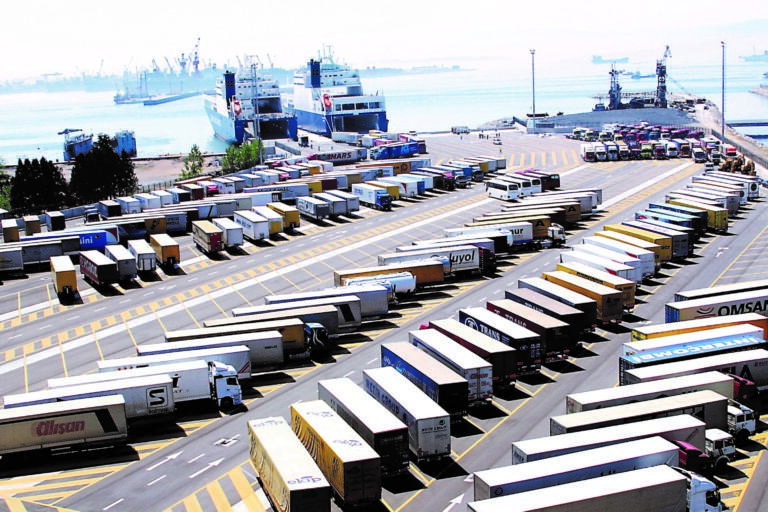Blog
by Nortal
Face fear with innovation
Since February, it seems like we are living a dystopian dream. We are locked inside our homes, hiding from an invisible villain, while the economy is on a fast, downward spiral. Without knowing when this all will end, we have partially adapted to the new reality. Some adjusting better than others.
For example, many children in different parts of the world are on an indefinite school holiday, not knowing when they can continue acquiring all the knowledge necessary to carry the future of this world. CNN writes that nearly every American child is not currently in school. Around 124,000 school closings affect more than 55 million American students. “What are all those kids doing? They’re supposedly distance-learning or homeschooling, taking screen lessons or self-teaching. (Let’s get real. A lot of them are playing Minecraft or making TikToks.) Just like the American education system on any given day, the coronavirus closure is a massive patchwork,” Zachary B. Wolf from CNN elaborates.
In Estonia, kids are still going to school every weekday. They eat their breakfast, brush their teeth and go to their room to start their online lesson.
Marek Helm, Nortal’s General Manager of GCC and Africa and former head of the Estonian Tax and Customs Board (the flagship of government digitalization in Estonia), believes that this is of crucial importance. “Kids are our future, and it is so important that the habit of studying, of learning new things, doesn’t subside. Their work continued instantly after the schools went in lockdown because of the coronavirus,” Helm notes. “Every day, they learn and take one step further ahead compared to the kids staying at home, waiting for school to start again.”
Not only school children benefit from digital services in Estonia. While working from home offices and having online meetings is now a new norm everywhere in the world, governments have to think quickly regarding how to offer their services without asking people to go outside to run errands. In Estonia, nothing had to change because of the quarantine. Citizens were already doing everything online — applying for benefits, doing their taxes, signing up for unemployment services, getting their prescriptions from their doctor and naming their newborns. There was no need to create digital versions of government services in a hurry. Noted, however, the Estonian government did create its own “chatbot” called Suve to answer coronavirus-related queries.
To support other countries, Estonia offered its digital education solutions for free. “Interest in Estonia’s other digital solutions has also risen substantially,” Helm states, as he has already received phone calls about digitalizing certain services. “It is now a matter of picking up the phone or sending a letter. The world is in it together.”
Prioritizing digitalization
When observing British government actions in a fight against the virus and its ramifications, The Economist noted that COVID-19, just like war, is forcing innovation on a scale and at a pace that no government would typically contemplate. Across the public sector, what was previously unthinkable is happening. This overhaul of decades or even centuries of procedures and habits is being driven from the center.
Until now, digitalization was a fashion word for many states. “There was no systematic evolution of digital services,” Marek Helm observes. “Many times, it has just been about creating a few ‘cool’ applications, which is not how one would define government digitalization.”
But there is nothing like a severe crisis to change the world and how it works. People rely more on government services now than ever (for example unemployment services), but the quarantine complicates using them. Real digitalization is, therefore, inevitable.
McKinsey and Company states that a shock of this scale will create a discontinuous shift in the preferences and expectations of individuals as citizens, as employees, and as consumers. These shifts and their impact on how we live, how we work, and how we use technology will emerge more clearly over the coming weeks and months. Institutions that reinvent themselves, to make the most of better insight and foresight as preferences evolve, will disproportionally succeed.
“When you turn on the TV in the morning and hear Angela Merkel on BBC saying that Germany is facing the biggest challenge since World War II, then how can you even assume that everything will go back to the way it was,” Helm asks. He insists that it is time for the leaders to create a new vision for their countries. “When the economy shrinks by 25 percent, all the previous plans go out the window.”
Both the International Monetary Fund (IMF) and McKinsey have warned that the world economy is set for its most substantial blow since the Great Depression. But Helm says that we have to take advantage of the crisis. “The parliaments shouldn’t vote on modifying the laws to get over obstacles that the crisis has created, but instead, change the laws entirely to support new ways of living after the crisis,” he insists.
In their 2010 Harvard Business Review article “Roaring Out of Recession,” Ranjay Gulati, Nitin Nohria, and Franz Wohlgezogen found that during the recessions of 1980, 1990, and 2000, 17% of the 4,700 public companies they studied fared particularly badly: They went bankrupt, went private, or were acquired. But just as striking, 9% of the companies didn’t simply recover in the three years after a recession—they flourished, outperforming competitors by at least 10% in sales and profits growth. A more recent analysis by Bain using data from the Great Recession reinforced that finding. The reason for this is behind three key practices: focus on decision making; look beyond layoffs and – invest in technology. The first reason to prioritize digital transformation ahead of or during a downturn is that improved analytics can help management better understand the business, how the recession is affecting it, and where there’s potential for operational improvements, writes Harvard Business Review. That also goes for governments.
Digital government is excellent for measuring the pulse of the country’s economy. For example, using the Tax and Customs Board’s extensive database, the government can immediately analyze the way different business fields are affected by the crisis and then act quickly. “We can instantaneously see when the trend of registering new companies is going down and when it’s going back up again,” Helm draws an example. “And when we allot billions in subsidies to different fields, it is important that we see the effect of it. It’s a matter of a conscious, planned and analytical way of measuring the effect with algorithms.”
Fight against a common enemy
A common enemy makes for better cooperation, and the enemy is COVID-19. “We need to utilize the fear and turn it into forward-thinking,” Marek Helm says. Both public and private sectors need to send a clear message that we are strong, and we are already thinking about how to live in this new world and how to turn it into our advantage.”
McKinsey writes that the aftermath of the pandemic will provide an opportunity to learn from a plethora of social innovations and experiments, ranging from working from home to large-scale surveillance. With this will come an understanding of which innovations, if adopted permanently, might provide substantial uplift to economic and social welfare — and which would ultimately inhibit the broader betterment of society, even if helpful in halting or limiting the spread of the virus.
Countries need strong political will, a vision and a systematic approach to digitalization to get to a place where everything still works seamlessly — even in a new crisis or new outbreak. Prioritizing digitalization means that the prerequisites of a digital government are written into law. “Estonia was the first country where personal ID-cards are mandatory, but passports voluntary. When people hear this, they are really surprised,” Helm illustrates Estonia’s efforts that have paved the way to where the country now stands, being called the digital wunderkind of Europe and the most advanced digital society in the world. “It’s about building the pillars on which the digital society can stand.” ID-cards allow secure verification, which in turn, opens doors to a vast array of digital services. Even though mandatory, applying for an ID-card is made easy and digitally possible in Estonia.
The X-road, a centrally managed data exchange layer, is another “must” when building a digital society. The once-only principle, where citizens, institutions and companies only have to provide certain standard information to the authorities and administrations once, leads to government digital services that are easy to use and allow further innovation (e.g., proactive services).
“The best way to explain the digital government is Uber and the emotion you get when using the innovational transportation service,” Helm draws a colorful parallel. “I can order a car with my phone, but without call waiting and unnecessary explanations. I then know that Dmitri is coming to pick me up in five minutes, and Dmitri knows that Marek is going to sit in the backseat of his car. If we want, we can chat; if we want, we don’t have to say a word. Everything is clear — both where to drive and the price. And then comes the punch line — when getting out of the car, we feel like we got a free ride. Even though I do pay for the ride (and even though it’s not much), there is no old school hassling and money moving that everyone dislikes at the end of a cab ride. The Uber logic in running a country is stronger in Estonia than anywhere else. We get to use government services and do our taxes without having to queue and depend on the civil servants’ moods.”
COVID-19 might blow over, but before COVID-20 strikes, countries have to figure out how to protect and serve their citizens. Now.
Nortal has been a part of more than a third of Estonia’s digital disruption and has successfully exported this experience to other countries. If you found that this article correlated with your own thoughts, please contact Marek Helm.

Ats Albre
Estonia
Ats Albre leads Nortal’s Estonian business, awarded with the Most Competitive Large-Scale Company in 2022 and the Company of the Year title in 2020. He has more than a decade of experience in implementing state-of-the-art eGovernment and eHealth solutions and helping develop technology driven visions.
Get in touch
Let us offer you a new perspective.


